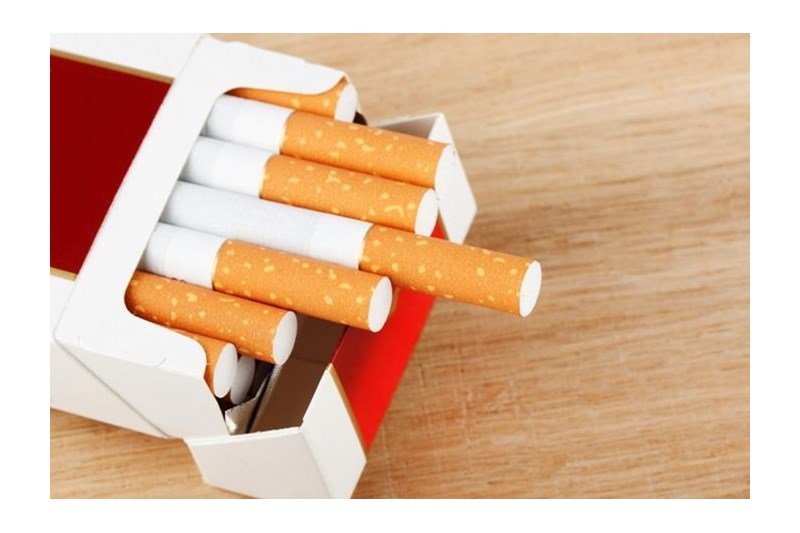Smoking is a prevalent habit that poses severe health risks to individuals who engage in it. The act of smoking involves inhaling and exhaling the smoke produced by burning tobacco, which contains numerous harmful substances. In this article, we will explore the detrimental effects of smoking on the human body and discuss the importance of quitting this harmful habit.
I. Introduction
Smoking is a well-known practice that involves the inhalation of smoke produced by burning tobacco. According to statistics, smoking is a widespread habit, with millions of individuals around the world addicted to tobacco products. However, the consequences of smoking are far from benign, as it is linked to numerous health risks and diseases. In this article, we aim to shed light on the harmful effects of smoking and raise awareness about the importance of quitting.
II. Health Risks of Smoking
A. Increased Risk of Cancer
- Lung Cancer: Smoking is the leading cause of lung cancer, responsible for the majority of cases worldwide. The harmful substances in tobacco smoke, such as tar and carcinogens, can damage the cells in the lungs and lead to the development of cancerous tumors.
- Other Types of Cancer Associated with Smoking: In addition to lung cancer, smoking is also linked to an increased risk of various other types of cancer, including mouth, throat, esophagus, pancreas, kidney, bladder, and cervix cancer. The toxic chemicals in tobacco smoke can affect different organs and contribute to the formation of malignant cells.
B. Respiratory Problems
- Chronic Obstructive Pulmonary Disease (COPD): Smoking is a major cause of COPD, a progressive and debilitating respiratory condition. COPD encompasses chronic bronchitis and emphysema, characterized by persistent coughing, wheezing, shortness of breath, and damage to the airways and lung tissue.
- Emphysema: Smoking destroys the air sacs in the lungs called alveoli, leading to the development of emphysema. This condition impairs the exchange of oxygen and carbon dioxide in the lungs, resulting in breathing difficulties and reduced respiratory function.
- Bronchitis: Smoking irritates and inflames the bronchial tubes, leading to chronic bronchitis. This condition is characterized by a persistent cough, excessive mucus production, and frequent respiratory infections.
C. Cardiovascular Diseases
- Increased Risk of Heart Disease: Smoking is a major risk factor for heart disease, including coronary artery disease, heart attacks, and heart failure. The toxic chemicals in tobacco smoke damage the blood vessels, leading to the buildup of plaque, reduced blood flow, and an increased risk of blood clots.
- Stroke: Smoking increases the risk of stroke by promoting the formation of blood clots and damaging the blood vessels in the brain. The reduced blood flow to the brain can result in a stroke, causing severe neurological damage or even death.
D. Negative Effects on Pregnancy
- Increased Risk of Miscarriage: Smoking during pregnancy significantly raises the risk of miscarriage and pregnancy complications. The toxic substances in tobacco smoke can harm the developing fetus and interfere with the normal growth and development of the baby.
- Premature Birth: Pregnant women who smoke are more likely to give birth prematurely, which increases the risk of health problems for the baby.
- Low Birth Weight: Smoking during pregnancy can lead to low birth weight in newborns, making them more vulnerable to various health issues.
E. Damage to the Respiratory System
- Impaired Lung Function: Smoking damages the lungs and impairs their function over time. The toxic chemicals in tobacco smoke cause inflammation, scarring, and the accumulation of mucus in the airways, leading to reduced lung capacity and breathing difficulties.
- Chronic Coughing and Wheezing: Smokers often experience persistent coughing and wheezing due to the irritation and damage caused by smoking. These symptoms can be disruptive and affect the quality of life.
III. Other Health Consequences
A. Increased Risk of Infections
- Respiratory Infections: Smoking weakens the immune system and makes individuals more susceptible to respiratory infections, such as pneumonia, bronchitis, and influenza.
- Weakened Immune System: The toxic chemicals in tobacco smoke impair the immune system’s ability to fight off infections, leaving smokers more vulnerable to various illnesses.
B. Decreased Fertility
- Impaired Sperm Quality: Smoking has a negative impact on male fertility by reducing sperm count, motility, and quality. This can make it more challenging for couples to conceive.
- Reduced Fertility in Women: Female smokers face an increased risk of fertility problems, including difficulties in getting pregnant and an increased likelihood of miscarriage.
C. Oral Health Problems
- Gum Disease: Smoking is a significant risk factor for gum disease (periodontitis), which can cause gum inflammation, gum recession, tooth loss, and other oral health complications.
- Tooth Loss: Smokers are at a higher risk of tooth loss due to the adverse effects of tobacco smoke on the supporting structures of the teeth.
D. Skin Damage
- Premature Aging: Smoking accelerates the aging process of the skin, leading to the development of wrinkles, fine lines, and a dull complexion. It also diminishes the skin’s elasticity and can cause skin discoloration.
- Increased Risk of Skin Cancer: Smokers are more prone to developing skin cancer, including squamous cell carcinoma and various other forms of skin malignancies.
IV. Secondhand Smoke
A. Health Risks for Nonsmokers
- Respiratory Problems: Secondhand smoke exposure can cause respiratory issues in nonsmokers, including coughing, wheezing, asthma attacks, and an increased risk of respiratory infections.
- Increased Risk of Heart Disease and Cancer: Nonsmokers exposed to secondhand smoke are at an increased risk of developing heart disease and certain types of cancer, similar to the risks faced by active smokers.
B. Protection from Secondhand Smoke
- Smoke-Free Policies: Implementing smoke-free policies in public places, workplaces, and homes can protect nonsmokers from the harmful effects of secondhand smoke.
- Creating Smoke-Free Environments: By creating smoke-free environments and promoting smoke-free lifestyles, individuals can reduce the exposure of themselves and others to tobacco smoke.
V. Quitting Smoking
A. Health Benefits of Quitting
- Reduced Risk of Diseases: Quitting smoking significantly reduces the risk of developing smoking-related diseases, including lung cancer, heart disease, stroke, and respiratory conditions.
- Improved Respiratory Function: Quitting smoking allows the lungs to heal and recover, improving respiratory function and reducing symptoms such as coughing and shortness of breath.
B. Strategies for Quitting
- Nicotine Replacement Therapy: Nicotine replacement products, such as patches, gums, and inhalers, can help individuals manage nicotine cravings and gradually reduce their dependence on cigarettes.
- Behavioral Support and Counseling: Seeking support from healthcare professionals, joining support groups, or undergoing behavioral counseling can greatly enhance the chances of successfully quitting smoking.
VI. Conclusion
In conclusion, smoking poses severe health risks and has detrimental effects on the human body. The habit of smoking increases the risk of various cancers, respiratory problems, cardiovascular diseases, and negative outcomes during pregnancy. Additionally, smoking affects fertility, oral health, and skin quality. Nonsmokers exposed to secondhand smoke also face health risks. However, quitting smoking brings about significant health benefits and can improve overall well-being. It is crucial to create smoke-free environments and provide support for individuals who wish to quit smoking.
Frequently Asked Questions (FAQs)
- Q: How does smoking increase the risk of cancer?
- A: Smoking introduces toxic chemicals into the body, which can damage DNA and lead to the development of cancerous cells.
- Q: Can smoking affect fertility in both men and women?
- A: Yes, smoking can impair fertility in both men and women by affecting sperm quality in men and reducing fertility in women.
- Q: Does secondhand smoke pose health risks to children?
- A: Yes, exposure to secondhand smoke increases the risk of respiratory problems, ear infections, and sudden infant death syndrome (SIDS) in children.
- Q: Are there effective medications to help quit smoking?
- A: Yes, there are medications such as nicotine replacement therapy and prescription medications that can aid in quitting smoking.
- Q: What are some strategies to resist tobacco cravings?
- A: Strategies to resist cravings include engaging in physical activity, finding distractions, using relaxation techniques, and seeking support from friends and family.
Internal Link – ragdi










